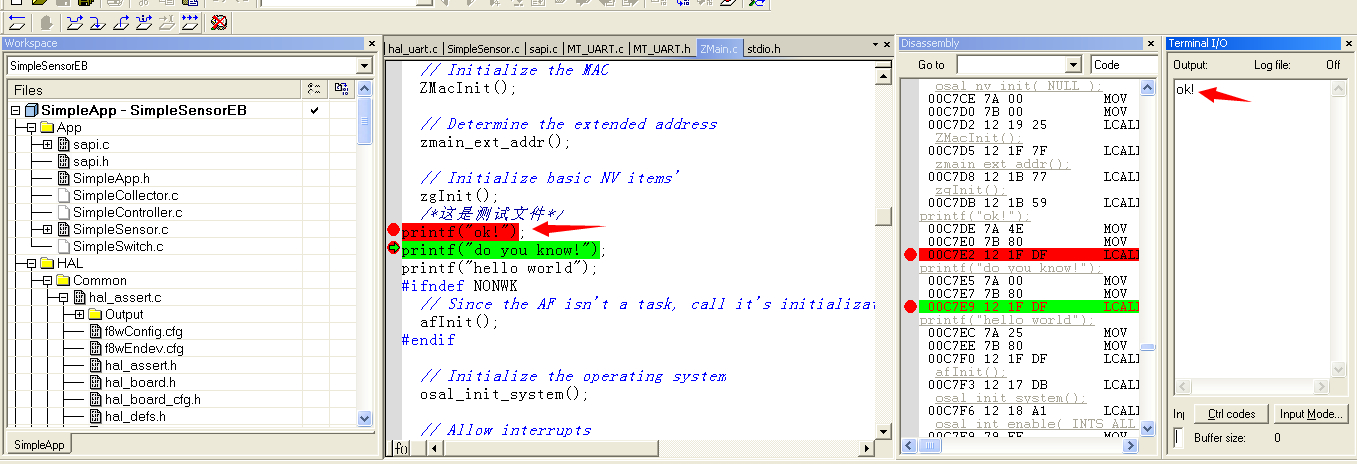在学习zigbee协议栈的时候,想实现单步走,并且为了让程序运转到某一步时希望能够输出一些打印信息到IAR工作台。这里给出具体的步骤:
添加需要输出的信息,比如我想在Zmain.c文件的main函数中打印“ok”;则在main函数中加入语句:printf("ok")并且包含头文件: # include "stdio.h";。为了更加清晰的看到打印信息,我们在printf语句前面加上断点。
点击debug按钮,将zigbee协议栈内容下载到节点;
然后点击菜单栏的view按钮,选择terminal I/O,然后把光标定位到断点处(即printf语句处),点击run to cursor按钮,就会出现打印信息:ok,下图是我的做出来的效果!























 1979
1979

 被折叠的 条评论
为什么被折叠?
被折叠的 条评论
为什么被折叠?








